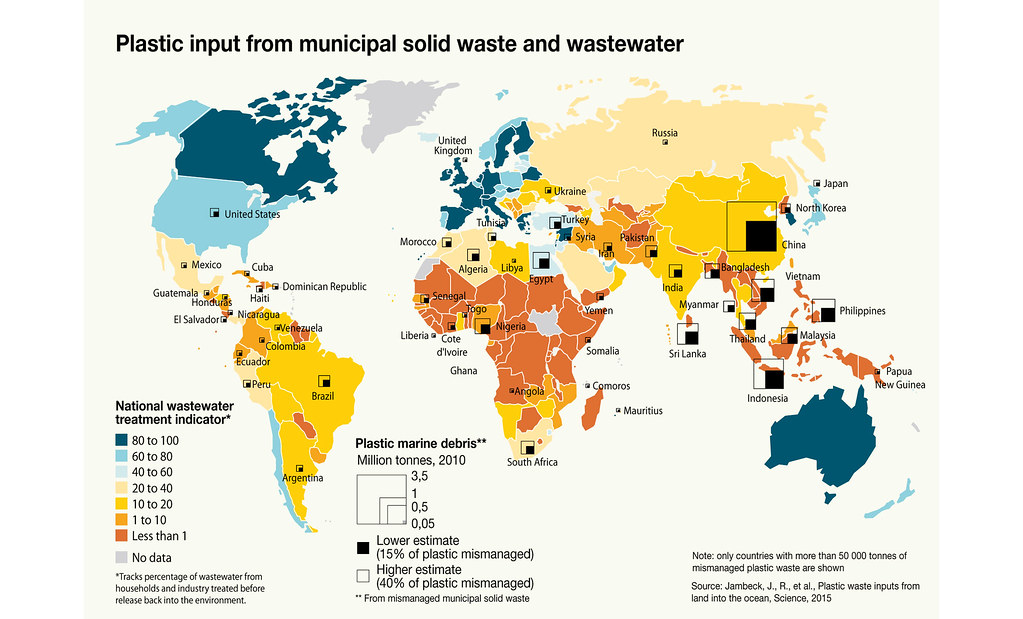Between 4.8 and 12.7 million metric tons of land-based plastic waste ends up in the ocean every year, and we’ve yet to reach “peak plastic pollution”. It is predicted to occur in 2100 as it is linked to population and economic growth as well as a projected increase in consumption per capita.
—
Plastic pollution in marine ecosystems has been a problem raised since the mid-1970s. At the time, ocean plastic debris came from at-sea vessel discharge (now banned), maritime accidents and military operations. Today, there are more contributors, but mostly far more plastic. Fishing activities, waterways and watersheds discharge as well as tidal and wind effects carry the ever-growing mountains of plastic litter to the sea.
It is present from the seafloor to the surface waters, from our coastlines to the center of the Pacific, and from pole to pole. Large pieces of plastic debris get fragmented into microplastics eaten by the smallest organisms of the food chain. As a result, plastic enters and climbs up the chain until it reaches us, but not before harming every organism it goes through.
Even though plastic pollution has been studied, not much is known on inland plastic waste. Its origin and its amounts are very difficult to assess because of geographical and seasonal variation. We currently estimate that around 80% of ocean plastic waste comes from inland discharge. In order to better understand this phenomenon, data must be collected locally and systemically. River specific monitoring initiatives are already part of the schedule of NGOs and foundations, such as Surfrider Foundation Europe with the project Plastic Origin relying on citizen science.

Artist: Maphoto/Riccardo Pravettoni. Source: https://www.grida.no/resources/6925.
These types of projects fall within the wish of Palardy et al who want to work at the community level to generate greater impacts.
A 2015 study by Jambeck et al. used worldwide data on solid waste, combined with population density and economic development to calculate how much land-based plastic was entering the ocean. 192 coastal countries were analyzed, and findings show that 16 of the 20 largest contributors are middle income countries from Asia. Rapidly growing economies and populations with lagging plastic management policies and infrastructure seem to be at fault, and the authors warn that waste could increase by an order of magnitude in the next five years. It is crucial both for the world around us and ourselves to push for better waste management before this happens.
There is reason for hope as there are many initiatives making a difference. Indeed, individual and NGO-affiliated waste pickers and workers contribute to 58% of the plastic collected for recycling. We cannot underestimate the effect of individual choices and actions, both in reducing waste and influencing policy. Combined with education and discussion, behavioural changes can amount to something.
This article was written by Carla Baizeau.
You might also like:










![The Statistics of Biodiversity Loss [2020 WWF Report]](https://u4d2z7k9.rocketcdn.me/wp-content/uploads/2020/12/lprwinkyTHB-544x306.jpg)





